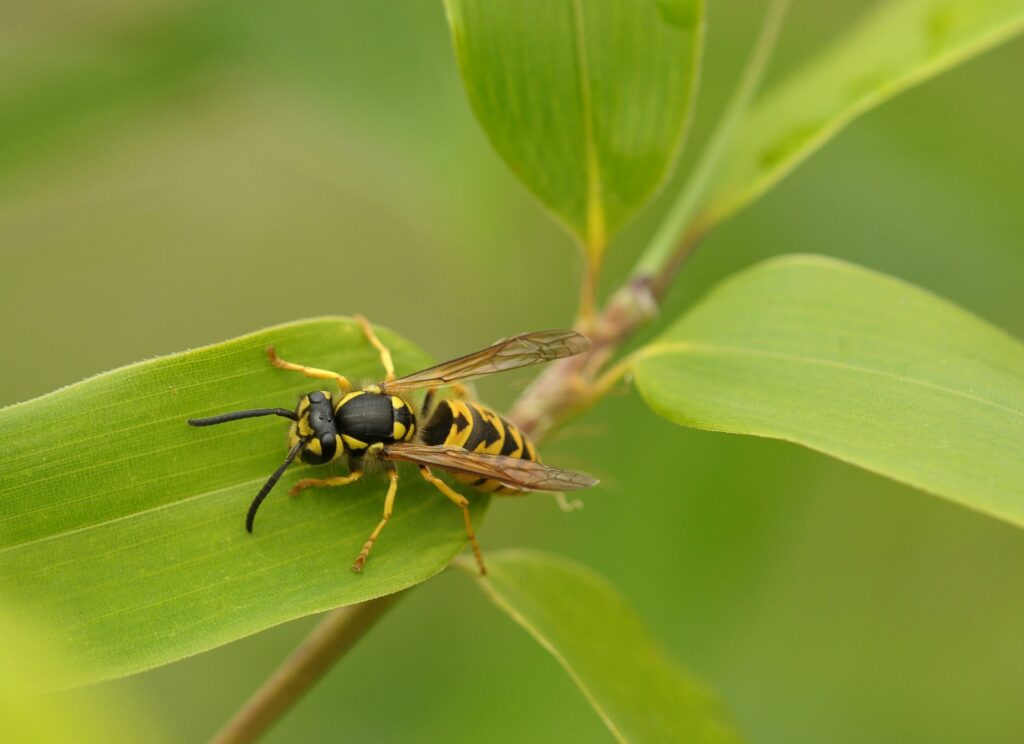Nothing gets people moving faster than the sudden buzz of a yellow jacket and honestly, it’s hard to blame them. These wasps aren’t just irritating they can become aggressive quickly, especially if you get too close to their nest by mistake. Yellow jackets tend to appear more frequently as the weather warms up, often building nests in hidden spots like garden corners, roof eaves, or even underground. The problem is, most people don’t notice a nest until someone gets stung. That’s why early action is so important. At Wasps Control Melbourne, we provide same-day, professional nest removal to keep your home or business safe before things escalate.
Understanding the Yellow Jacket Wasp
Yellow jackets belong to the wasp family and are commonly mistaken for bees due to their similar size and colour. However, they are much more aggressive and equipped with the ability to sting multiple times without dying. These wasps are typically around 10–16 mm long and feature bright yellow and black bands along their abdomen, smooth bodies (unlike the fuzzy bee), and narrow waists.
They are highly territorial and will not hesitate to defend their nests if they sense a threat making encounters risky, especially near schools, gardens, or outdoor bins where food and sweet drinks attract them.
Signs of a Yellow Jacket Nest
Spotting a single wasp isn’t always a red flag, but consistent sightings, particularly near ground level or wall cavities, might signal a nearby nest. Yellow jackets are known for building concealed nests in places like:
- Underground burrows or rodent holes
- Wall voids and ceiling spaces
- Inside sheds or wall insulation
- Tree stumps or dense shrubbery
- Roof eaves and garden retaining walls
You might notice increased wasp traffic coming and going from a particular crack or hole. In some cases, a faint buzzing sound from within walls can indicate a nest hidden out of sight.
Why Yellow Jackets Are Dangerous
Unlike bees, yellow jackets don’t lose their stinger after one use. This means they can sting multiple times in quick succession, injecting venom that causes pain, swelling, and in some people, severe allergic reactions. The risk of anaphylaxis makes them a serious threat, especially to children or individuals with known insect sting allergies.
Moreover, they are highly social and will swarm if their colony feels threatened. DIY methods that agitate the nest can easily lead to a dangerous situation, especially without proper safety gear or knowledge of their behaviour.
How to Identify Yellow Jackets vs. Other Wasps
In Melbourne, yellow jackets are often confused with European wasps, which are also aggressive and visually similar. However, yellow jackets can be distinguished by:
- Smaller size: Generally more compact and quicker in flight.
- Distinctive patterns: Their black and yellow stripes are more defined and symmetrical.
- Behaviour: They’re more likely to hover near sugary substances and are drawn to meats and sweet drinks at picnics or barbecues.
Keeping a safe distance and observing from afar is best. Avoid swatting or attempting to block their entrance paths to nests.
What to Do If You Discover a Nest
Finding a yellow jacket nest on your property requires immediate attention, but safety should always come first. Here’s what to do—and what to avoid:
Do:
- Keep children and pets away from the area.
- Avoid mowing the lawn or using heavy machinery near suspected ground nests.
- Observe from a distance to locate the nest’s entrance.
- Cover or move uncovered food and drinks that may attract the wasps.
- Call a professional pest control service for wasp nest removal in Melbourne.
Don’t:
- Spray insecticides during the day when the wasps are active.
- Attempt to block the nest entrance; this may cause the wasps to find another exit—possibly indoors.
- Use smoke or water to flush them out—this often backfires.
- Poke, prod, or attempt DIY destruction.
Why Professional Help Matters
There’s a significant difference between spotting a few stray wasps and having an active nest near or inside your home. Removing a yellow jacket nest isn’t just about killing the insects—it’s about ensuring the entire colony, including the queen, is eradicated safely and the site made uninhabitable for future nests.
Engaging a licensed pest technician ensures:
- Correct identification: Knowing what species you’re dealing with affects how it’s treated.
- Access to professional-grade treatments: These are more effective and safer for the environment.
- Protective equipment: Proper gear reduces the risk of stings during removal.
- Preventive advice: Experts can recommend steps to keep your property wasp-free.
When to Expect Yellow Jacket Activity in Melbourne
Yellow jackets are typically most active in late spring through summer and into early autumn. In warmer years, nests may survive longer, and queens may remain active in hidden areas. Nest sizes also grow throughout the season, making early intervention critical.
In autumn, food scarcity makes them more aggressive as they search for sweet and protein-rich foods. That’s often when they become more noticeable around outdoor gatherings and bin areas.
Yellow jackets might be small, but their impact on outdoor comfort and safety can be significant. Recognising them early, understanding their behaviours, and avoiding DIY removal attempts are crucial for anyone wanting to maintain a sting-free environment.
If you’re in Melbourne and have noticed wasps buzzing around or spotted a suspicious nest near your home or workplace, it’s best not to take any chances. Yellow jackets and other wasps can be aggressive, and attempting to remove a nest on your own could lead to painful stings or even serious allergic reactions. The safest way to handle the problem is to seek help from professionals who understand wasp behaviour and have the right tools to remove nests safely. That’s where Wasps Control Melbourne comes in. Call 03 9021 3738 today to book a same-day inspection or request a free quote.




